Want to issue a section in Japanese style, but can not choose suitable plants? Look at Willow Matsudan. It is this amazing tree that can often be observed in the paintings of Japanese artists. The tree attracts attention at first sight. Despite the fact that it belongs to the IV family, it is very different in appearance from the majority of the usual varieties of willow. The elegant decorativeness of Willow Matsudan gives thin curved branches that form an openwork crown. In this article, we will consider the features of the boarding of Willow Matsudan, the ways of its reproduction on the site, as well as the care trips.
Iva Matsudan - Description
- WWI Matsudan is sometimes called the guysud, the yawa of the winding matsuda, the Chinese willow, the corkscrew, Vigory Beijing.
- In the wild, the winding Wavi Matsudan can be found on the banks of rivers and reservoirs in Japan, Manchuria, China, Korea.
- IVA winding matsudan belongs to the IV family.
- Under favorable growth conditions, Iva Matsudan can reach from 8 to 13 meters in height. Croon tree also has impressive dimensions - 5-6 meters.
- Willow Matsudan can grow both as a tree, and as a semi-staple.
- Young shoots of Willow Matsudan have a yellowish or olive color. Over time, the branches are darker and become brown.
- The leaves of Willow Matsudan grow on small stiffs reaching 2-8 mm in length. In the form of leaves, elongated with a pointed edge reach up to 10 cm long and up to 1.5 cm wide. The top of the leaf is green, and the bottom is sisaya or whitening. Immediately after the dissolution of the leaves of the willow Matsudan are covered with small villings that give the silkiness of the surface of the sheet. As the sheet heost grows, its surface becomes completely smooth.
- At the time of bloom, Iva Matsudan is covered with yellowish inflorescences, which people are often called "servants". Usually the tree begins to bloom simultaneously with the dissolution of the leaves in April.
- The advantage of Willow Matsudan are high growth rates. Especially quickly the tree grows in young age.
- The root system at Willow Matsudan is well developed, branched, flat.
- Matsudan willow's fruit - a small box filled with numerous hairy seeds.
Useful properties of Willow Matsudan
Willa Matsudan on your site may have not only decorative value, but also quite real practical benefits. In many recipes of traditional medicine, it is quite often possible to meet IVA as the main component. IVA winding matsudan can have the following types of impact on the human body:
- antipyretic;
- antibacterial;
- anthelnogon;
- immunostimulating;
- binder;
- soothing.
The leaves and Crara willow Matsudan can be used in the treatment of various dental ailments. It is also believed that the Yves broom in the bath is able to alleviate the symptoms of osteochondrosis and gout. If you rinse the hair with decoction willow, then you can significantly improve their appearance, make it healthier and strong.
Iva Matsudana - Photo
Varieties of willow Matsudana
Willow Matsudana Tortoosa
Willow Matsudana Tortoosa is one of the most popular varieties of winding willow. Trees or semi-workers rarely exceed a height of 3.5 meters. Barrel Willow is not too winding. Skeletal branches will grow up, but young shoots have a beautiful winding shape and grow down, creating a "mold" crown shape. The trunk of the willow croeosa has a grayish tint, the leaves grow in the form of twisted spirals. A feature of this variety of willow Matsudan is its low frost resistance. The tree often freezes, heavily tolerates spring frosts.
Iva Matsudana Erythroflexosis
Willow Matsudana Erythroflexosis is characterized by slow growth rates. Under favorable conditions, a tree or semi-staple can reach a height from 4 to 6 meters. Croon tree has a spherical shape. Shooting willows are very winding, have a yellowish tint. Willow Matsudana Erythroflexosis has even lower winter-hardy characteristics than Wawa Matsudana Tortoosa. The tree prefers to grow on well-lit, fleasting areas with a wet soil. Krona Willow is very thick and has a tendency to thickening. An obligatory element of the care of a given variety is the annual trimming. If you want to plant a more frost-resistant winding willow, then look at the "counterparts" willows Matsudan - Willow of Sverdlovsk selection, not inferior on decorativeness.
Landing willow Matsudana
Selection of landing sites for willow Matsudan
- Iva Matsudana is one of those rare plants that will not interfere with the growth and development of a close adjacent to the surface of groundwater ground. If your site has exactly such a feature, then we boldly land the winding Matsudan. The tree will be perfectly located near the pond, rivers or other reservoirs.
- Most of the grades of Wawa Matsudan prefer to grow on the illuminated areas, but can grow in half.
- For the landing of Willow Matsudan, it is worth choosing a plot protected from strong northern winds and drafts.
- When choosing a plot for planting winding willow Matsudan, it is necessary to take into account the location of other ornamental plants. Willow will greatly look both alone and in the "companies" of other Yves or other decorative shrubs, trees. But make sure that too high trees do not create a shadow on the IVA.
- In order for Willow Matsudan to do not lose his decorative qualities, had a beautiful crown, one should not land her close near the wall at home, near the arbor. If you put this Japanese beauty in such a place, then the crown can grow "one-sided".
- Willow Matsudan can be planted even on a plot with contaminated, dusty air. These trees are known for their ability to detain dust from the air, making it cleaner.
- If you have a sandy slope on your site, requiring strengthening, then you feel free to sit there Iav Matsudan. This plant has a well-developed root system, which will strengthen the slope.
Choosing a soil for willow Matsudan
Winding Will Matsudan is a universal plant that is unpretentious to the composition and type of soil. But in order for the tree to show itself in all its glory, it is advisable to create optimal conditions for it:
- optimum soil option for most grades Matsudan - this is lightweight loam;
- willow Matsudan prefer to grow on moistened soils;
- willow Matsudan better manifest their decorative qualities on alkaline or weakness;
- winding willows grow perfectly even on an unnecessarily compacted soil.
Choice of time to landing Willow Matsudan
You can plant Matsudan's winding wizard, both in spring and autumn. If you bought a sapling with a buried root system, then it is possible to plant it in the ground almost anytime from spring and to autumn. If your saplings of winding willow has an open root system, then it is necessary to plant it or early in spring until the moment of dissolving the kidneys, or in October with the beginning of the leaf fall.
Landing Technology Willow Matsudan
- Prepare a planting yam with a diameter of about 50 cm and a depth of about 40 cm.
- If you plan to put a few winding Yves to be planted next to each other, it is better to dig a trench 50 cm wide and a depth of 40 cm.
- If the soil on your site meets the "requirements" of the winding willow Matsudan, then you can immediately go to the landing. If the soil is not too nutritious, then you can prepare an earthen mix for filling the landing pit. Mix the garden soil with a compost in equal proportions and fill out a hole with a mixture by one third.
- If the earth on your site is too dense and clay, you can add to the soil designed to fill the landing pit, up to 20% of sand. If the earth is too poor, it is desirable to add a complex mineral fertilizer.
- Gently remove the seedling from the container, trying not to damage the earthen com. Keep the IVA in one hand in the center of the landing pit, and begin to fill the pit with the second hand. Periodically shake the seedling so that there are no air emptiness in the pit.
- After planting the surface of the soil around the willow winding matsudane, it is necessary to pour and climb peat, sawdust or other similar material.
Iva Matsudan - Care
Willow is a winding matsudan - a tree that will not cause special difficulties in care. Most varieties are remarkably transferred both drought and excessive soil moisture.
- Watering. The frequency and volume of watering of winding willow Matsudan depends on the place where the tree grows, and from the age of the tree. Since young IV root system is only formed, they need more frequent and abundant irrigation. What the tree becomes an adult, the less abundant becomes watering. Adult Willow Matsudan may need from 2 to 4 vests of water under one tree 2-4 times a month. The frequency and abundance of irrigation can be reduced if the tree grows not far from the reservoir or grows on a plot with groundwater close to the surface.
- Weeding. To maintain the decorative appearance of the landing of Willow of the winding matsudan, of course, regularly needed to get rid of weed grass.
- Swimming. To ensure a full supply of the root system of wood with oxygen, the soil around the willow should be periodically loosened.
- Mulching. IVA winding matsudan prefers a moisturized soil, but he can stand and drought and drought. In order not to force the tree to pass through such difficulties, it is desirable to mulch the surface of the soil around the willow. This technique will help maintain the valuable moisture at the roots for a longer time.
- Feeding Like most ornamental trees and shrubs in the garden, the winding will be positively reacted to fertilizers. Depending on the soil composition on your site, you may need from 2 to 4 feeding per year. You can use both organic fertilizers and complex minerals. When applying fertilizers to IVA Matsudan should be borne in mind that with the arrival of autumn it is necessary to stop making fertilizers in their composition of nitrogen. This substance will prevent the full preparation of Willow to the winter period.
Iva Matsudan - Pruning
In the need for an annual forming trimming for willow, winding matsudan there is no consent among many gardeners. Some believe that the tree without trimming itself will form a harmonious and natural shape of the crown. Other gardeners tend to believe that Eve Matsudan without trimming will turn into an incomprehensible "lump" from the branches. Consider the types of trimming that can be applied with respect to IWA winding:
- sanitary trim. Delete damaged, dry shoots, which only spoil the appearance of willow, is definitely worth it. Such a crop is usually carried out in spring prior to the start of the processes of the depotation;
- corrective trim. This type of trimming is also considered rather "easy". Every spring you need to carefully examine the crown of the tree. If there are branches that grow towards the center of the crown, which grows up much lower than the rest of the branches, then they need to be removed. Corrective trimming only emphasizes the natural beauty of the tree, makes the shape of the crown with a clearer and pronounced;
- forming trimming. This type of trimming implies a complete or partial change in the shape of the crown. Most gardeners converge in the opinion that a single forming trimming will force you to form a crown with a radical way every year. IVA winding matsudan - a tree that is distinguished by a high rate of future formation;
- trimming "under the stump". Some gardeners annually spill the IVI to the winding Matsudan before Stump. Sometimes it is necessary to increase the frost resistance of the tree. Speed \u200b\u200bunder the stump Iva easily takes even the strongest frosts, and in the spring it will easily and quickly start increasing new shoots. Such a radical method of trimming is applied and then when the gardener wants to grow a wizard in the form of a shrub. Just keep in mind that only those trees, the diameter of the trunk reached 5-6 cm.
From the crown will be easily able to form various shapes - ball, cylinder, pyramids, etc. If you are interested in the manufacture of topiaries, a garden bonsai, then Iva Masudana is an excellent option for your garden.
Willow Matsudan in Landscape Design
Willow Matsudan, thanks to his wide pyramidal crown, will be perfectly looked at any garden. This tree can absorb dust. The bark of olive color, silver swirling leaves, a variety of bizarre winding shoots create an unforgettable spectacle together. In nature, there are no two identical IV Matsuda. Landscape designers love to resort to the "help" of the winding wizard. It can be used in the following types of landing:
- single landing. IVA winding matsudan will not look lonely and unbelievable if you put it separately from other ornamental plants in the garden. Willow will be equally exquisied both in the summer and in winter;
- group landing. WWI winding matsudan can be planted near coniferous trees, other decorative deciduous trees, shrubs and semi-staples. And the alley from Yves Matsudana will turn your garden into a real Japanese garden;
- landing near the reservoir. IVA winding Matsudan will be spectacular to look at the water. In addition, this tree reveals itself in all its glory precisely on moistened areas.
Dry branches of winding willow Matsudan are excellent material for creating floristic compositions.
Difficulties in the cultivation of Willow Matsudan
Winding willow Matsudana - a tree that requires a minimum of care efforts. But sometimes gardeners still may experience some difficulties in the cultivation of this decorative tree. For example, during the hot and very wet weather, IVA may be sick of fungal spot. It is possible to notice this ailment on the presence of sulfur stains on wood leaflets. The greatest efficiency in the deliverance from fungal spottedness was the drug Copper chlorine, who need to spray the above-ground part of the willow Matsudan. The pests rarely affect IVA winding, but sometimes you can see:
- paouth tick;
- ivovo Vyatska;
- caterpillars;
- popolevoid beetle-leaf-sheet;
- osinovoy-leaf-leaf;
- tRU;
- elephant, etc.
If you notice that IVA winding suffers from any pests, then it is necessary to get rid of them. In specialized gardeners stores there are a large number of drugs that are effectively struggling with pests. In order not to meet with various difficulties in the cultivation of Willow, you need to buy healthy and strong seedlings from proven sellers, observe landing technology, set the right watering mode and tree feeding.
Reproduction of Willow Matsudana
How to independently reproduce the winding whale Matsudan in his plot? Grow a tree from seeds, as you understand, the process is not just a long and time-consuming, but also very ungrateful. The root piglets will also do not form, therefore the reproduction is impossible in this way. The most common and most effective way is a method of reproduction with cuttings. Gardeners are even sometimes joking about IWA - "Wrap a stick in the ground and it will definitely let the roots." Consider an exemplary algorithm for reproduction of winding willow Matsudan by drawing up:
- first you need to decide on the time of the billet. It is best to cut them in early spring and immediately produce landing into the ground. But the autumn billet of cuttings is possible, which involves the subsequent storage of planting material throughout the winter;
- spring cuttings are cut before the leaves begin to bloom. One cutlets of Wawa Matsudan should be about 30 cm and have 5-7 kidneys. The upper cut on the cutting should be straight, and the lower - oblique. Please note that the lower slice should pass directly under the kidney. It is necessary to harvest the cuttings right before boarding, so the site prepare in advance. At the wet and nutritious ground, put a stalk, blocking it on a third of the length. In order to create more comfortable conditions for rooting, the cuttings can be covered with a can or create greenhouse conditions by another similar way;
- in the fall of the cuttings of Willow, winding matsudan begin to harvest only after dropping the leaves by the plant, when the rest period occurs. 30 cm long cuttings are placed in packages and stored in the basement throughout the winter. In the spring, the cutting is desirable to soak for some time in any of the solutions of the corpsimulator. It is necessary to plant cuttings into a wet and nutrient ground, blocking on a third of the length.
If you are worried that Iva Matsudan will not be able to root for some reason, you can first wait for its roots in the water, and only then plant in open ground. Rooting in water at Willow, as a rule, always happens quickly. On the bottom of the cutlets, make a few ladies, damaging the bark. Put the escape into the water and wait for the appearance of the roots. As soon as they appear, they will grow slightly, you can land willow in open ground. One of the most important factors for the success of the reproduction of winding willow Matsudan by the method of shifting is the control of soil moisture. Soil in no way should save. Otherwise, Willa is not rooted.
Iva Matsudan is a great choice for landscaping in Japanese style. Growing and care for this tree is so simple that even "newcomers" will be cope with them in gardening. Provide Willow Matsudan good lighting, rather wet soil, and it will definitely please you with the most unimaginable forms and bends.

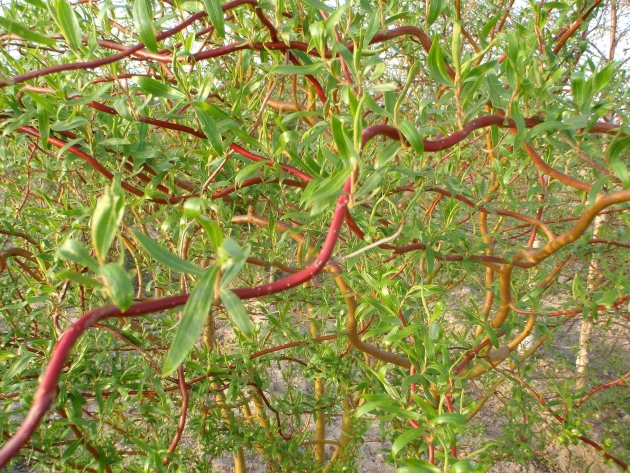
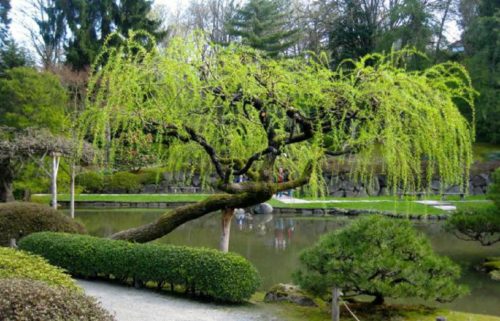

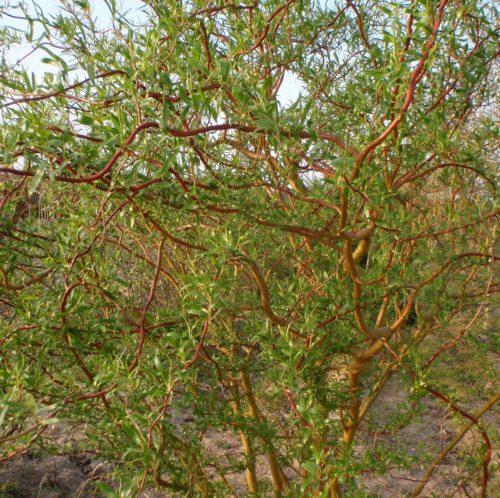
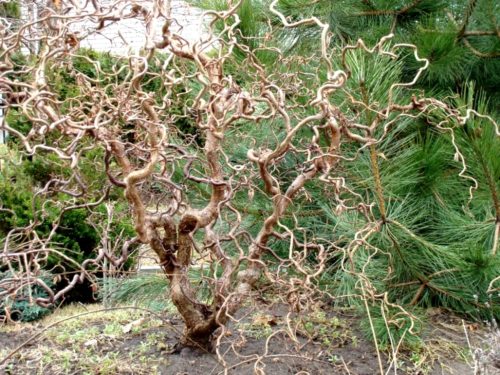
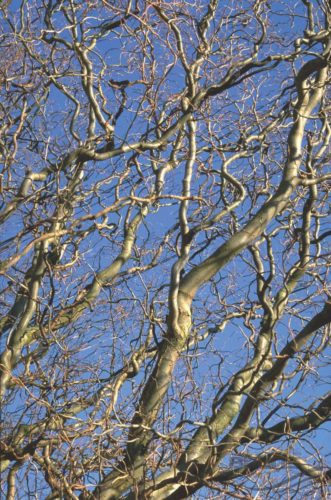
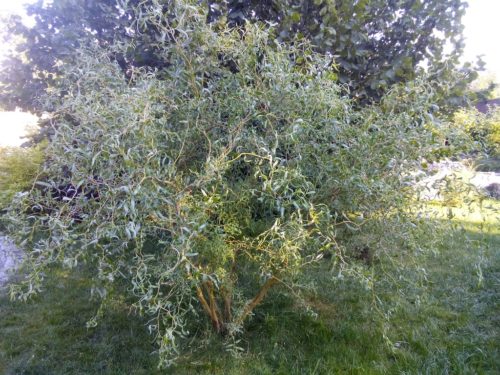

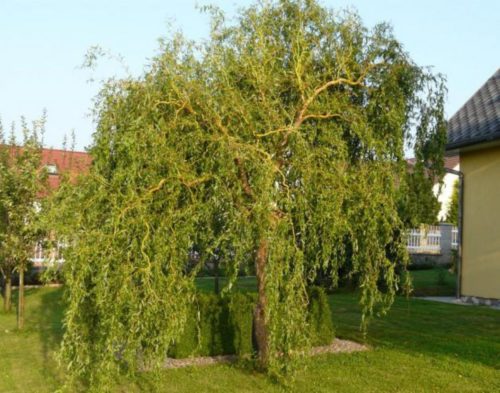












 Start a discussion ...
Start a discussion ...